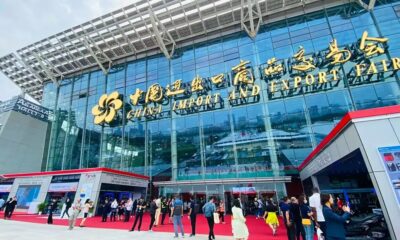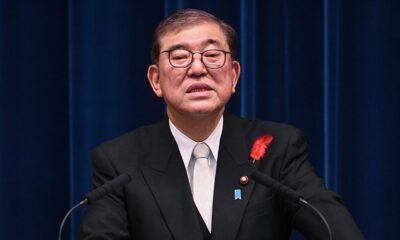Asia
China’s exports beat forecasts amid precautions against Trump’s tariff threat
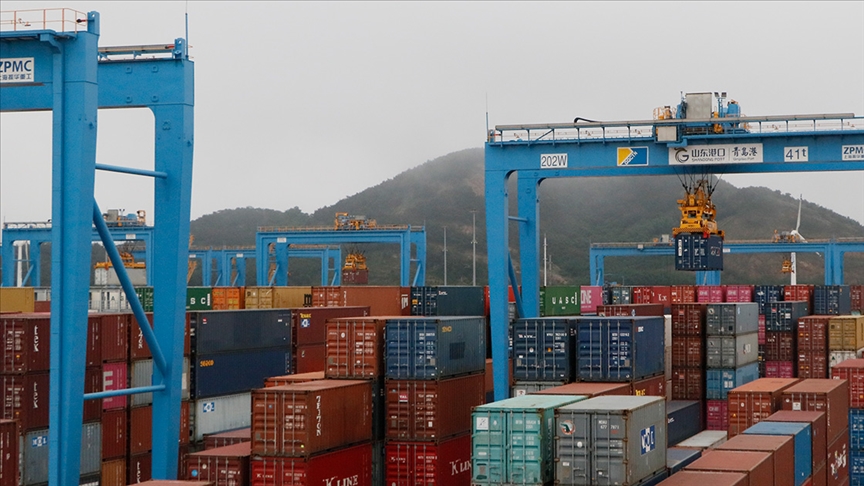
China’s exports surged at their fastest pace in two years this October, as factories increased shipments to key markets to counter new tariffs from the United States and European Union and the looming risk of a two-front trade war.
The recent victory of Donald Trump, who has pledged to impose tariffs exceeding 60 percent on Chinese imports, is likely to lead to a buildup of stockpiles in China’s top export markets.
Trump’s tariff threat has unsettled Chinese factory owners and officials managing exports worth approximately $500 billion annually. Tensions are further strained by trade issues with the EU, which purchased $466 billion of Chinese goods last year.
While domestic confidence remains impacted by a persistent property market debt crisis, export momentum offers a bright spot for China’s struggling economy.
Exports from the world’s second-largest economy rose by 12.7 percent year-on-year last month, surpassing a 5.2 percent increase forecasted by Reuters economists and a 2.4 percent rise in September. However, imports fell by 2.3 percent, against predictions of a 1.5 percent decline, marking the first negative import growth in four months.
China’s trade surplus climbed to $95.27 billion in October, up from $81.71 billion in September.
“We anticipate a wave of front-loading into Q4 before pressure mounts in 2025,” said Xu Tianchen, senior economist at the Economist Intelligence Unit. “This is largely due to Trump’s tariff threat, which is becoming increasingly realistic.”
The ‘Trump effect’ on exports
China’s exports to the U.S. increased 8.1 percent year-on-year in October, while shipments to Europe rose by 12.7 percent over the same period.
“We expect exports to remain strong in the coming months,” said Zichun Huang, China economist at Capital Economics, in a note. He added that the impact of Trump’s tariffs may not materialize until late next year.
Huang noted that Trump’s return could prompt U.S. importers to step up purchases to bypass potential tariffs, offering a short-term boost to Chinese exports.
China’s top exports to the U.S. last year included smartphones, tablet computers, and video game consoles. Similar to Trump’s initial term, Chinese electronics makers may once again be a target.
Yet, signals indicate waning demand for these goods. Trade data from South Korea and Taiwan points to slowing global demand, and German producers report declining interest from overseas buyers, suggesting that Chinese producers may be cutting prices or moving inventory out of China to attract buyers.
An official survey of factory activity in October showed Chinese factories struggling to secure overseas buyers.
“If the PMI new export sub-index is dropping while the export numbers are rising, it’s clear this is an inventory adjustment,” said Dan Wang, a Shanghai-based Chinese economist.
Rising rtocks and weak yuan boost exports
Chinese and Hong Kong stocks rose on Thursday, buoyed by investor optimism over potential stimulus measures, while the yuan rebounded from a three-month low against the dollar. Analysts note that the weak yuan may have fueled export growth, though it simultaneously raised import costs.
China’s imports from the European Union and Southeast Asia fell by 6.1 percent and 7.3 percent year-on-year last month, while Japanese imports continued to rise. Notably, crude oil purchases—from the world’s largest oil importer—dropped by 9 percent, marking the sixth consecutive month of decline on an annual basis.
Zhou Maohua, a macroeconomic researcher at China Everbright Bank, attributed the decline in import growth to weak domestic demand and low import prices.
Conversely, China’s soybean imports surged last month, as U.S. grain exporters raced to meet demand in China ahead of the U.S. election.
Economists warn against over-reliance on exports
Amid these challenges, economists urge Beijing to avoid over-reliance on exports for growth, recommending more economic stimulus to stabilize the economy.
ANZ analysts forecast a policy response involving monetary measures and other strategies to mitigate Trump-era tariff pressures.
“Authorities may also implement measures to cushion the tariff impact, such as subsidies or better access to financing,” said Raymond Yeung, ANZ’s chief economist for Greater China. He added that policy initiatives could also focus on domestic consumption campaigns and diversifying export markets within Belt and Road countries.
Asia
China trade fair: US market ‘frozen’ amid tariff hikes
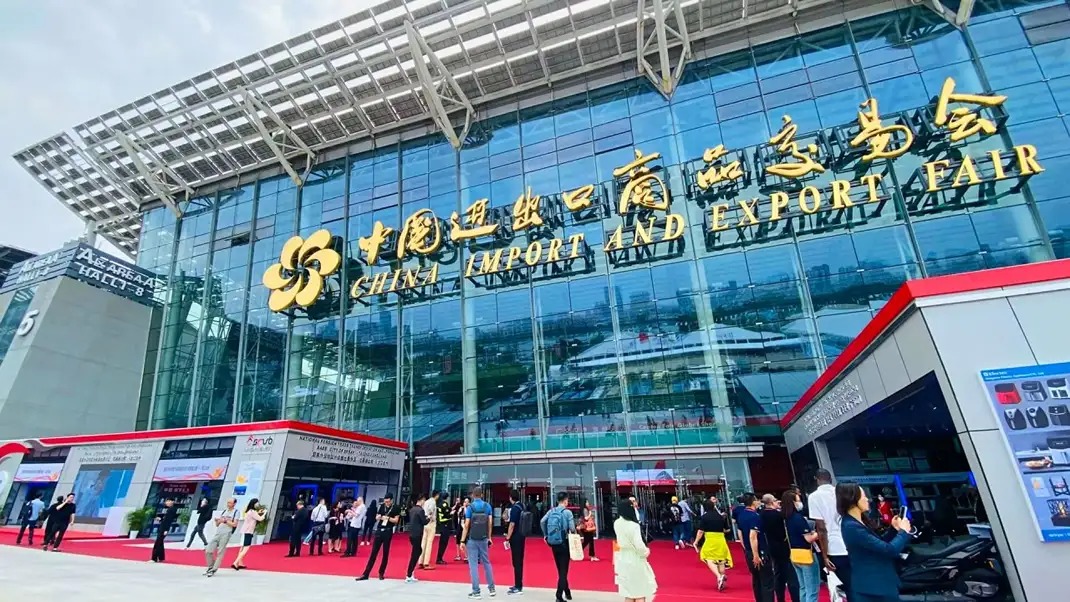
Candice Li, attending the China trade fair in Canton, says that US orders for her firm’s medical devices have dried up after Washington increased tariffs on Chinese goods by 145%.
Speaking to Reuters, Candice Li, marketing manager at Conmo Electronic Co., said, “This is a matter of life and death because 60%-70% of our business is with American clients.” She added, “Goods cannot be exported, and money cannot be collected. This is a very serious situation.”
Li was at her firm’s booth at the Canton Fair in the southern city of Guangzhou, China’s largest trade fair, held twice a year, where more than 30,000 participants display their products in an area larger than 200 soccer fields.
This fair is the first China has held since US President Donald Trump introduced tariffs earlier this month, exceeding 100% for China and at least 10% for the rest of the world.
Most of the exporters Reuters spoke with said that US orders, vital for firms like Li’s, were either delayed or not arriving—a bad sign for the world’s second-largest economy, whose growth last year relied heavily on its trillion-dollar trade surplus.
No other country comes close to China’s sales of over $400 billion in goods to the US annually.
Even though the tariffs Trump will impose on the rest of the world are much lower, they are likely to reduce global demand in the coming months and, indirectly, the appetite for Chinese goods in other countries.
Kobe Huang, a sales representative for Shenzhen Landun Environmental Technology, which produces water filters and smart toilets, said at the China trade fair in Canton that European sales are up for now, but the US market is “frozen.”
“US clients and distributors haven’t canceled orders, but they’ve asked us to wait. So, we’re holding on,” he stated.
Levy Spence, a US importer and president of Air Esscentials, said, “Prices will go up.” He added, “Even for products we source in the United States, many of the raw materials come from all over the world. It’s not just about China tariffs.”
Organizers noted that approximately 170,000 overseas buyers had registered for this month’s fair as of April 8, compared to a record attendance of 253,000 at the previous fair, which ended in November. About 10% of these attendees come from the US and Europe, whereas the previous rate was about 20%.
The fair will take place from April 15 to May 5. Local media reported that a total of $25 billion in deals were made at the previous fair.
Many exporters said they were either moving production bases outside of China or shifting the markets where they sell away from the US.
Henry Han, sales manager at Apexto Electronics Co., which produces SSD and micro SD flash drives, says that the US market, which accounted for 30% before the pandemic, now accounts for only 10% of direct sales. Many of his clients receive shipments of components for final assembly in a third country to avoid tariffs.
Apexto conducted a study last year to see if it could move production to Vietnam or the Philippines to avoid being directly affected by US tariffs, but Han said these plans are currently on hold as these countries may also face high tariffs.
After Trump imposed a 46% tariff on Vietnam and 17% on the Philippines on April 2, he reduced these rates to 10% for the next three months while beginning bilateral negotiations on trade with approximately 75 different countries.
David Du, sales manager for speaker manufacturer Zealot, said that an order for 30,000 speakers to be distributed to Skechers stores in the US was suspended after Trump’s tariffs. However, he said they could rely on other markets.
Zealot had a major and unexpected breakthrough in Nigeria in 2015, where its all-in-one speaker, power bank, and emergency flashlight became a hit, accounting for 40% of total sales and taking 45 containers a month—a market now twice as large as the US.
Du said they are “as big as JBL” in Nigeria, referring to the California-based audio equipment brand.
Medical device maker Li said her firm cannot find new markets overnight. She fears Conmo will soon have to reduce working hours and, eventually, staffing levels.
Li said, “I worry that if the situation remains deadlocked and neither side gives in, it will be ordinary people who ultimately suffer. How will salaries be paid? There will be unemployment.”
Asia
Japanese prime minister warns of US tariffs’ impact on global economy
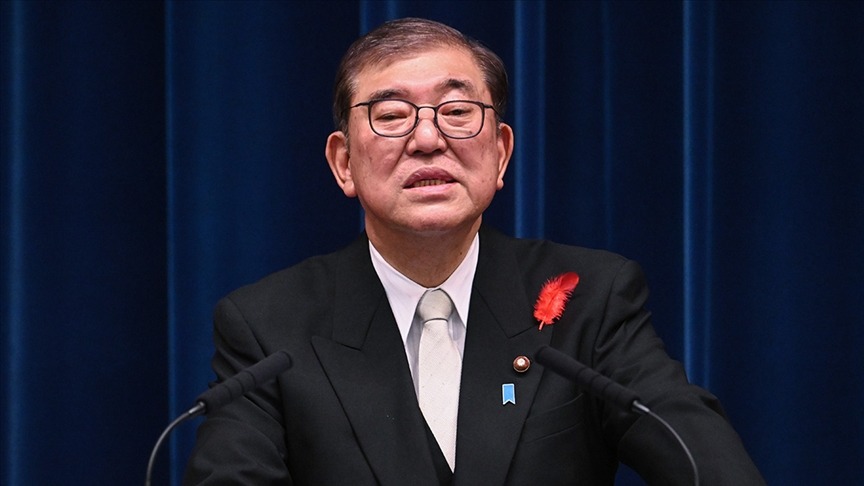
Japanese Prime Minister Shigeru Ishiba warned on Monday that US tariffs could disrupt the global economic order. However, he also emphasized that Japan would seek common ground with the US on how the two countries could cooperate on various issues, from trade to national security.
“When negotiating with the US, we need to understand the logic and emotional elements behind Trump’s views,” Ishiba said in a parliamentary speech.
“I am fully aware that what has happened so far has the potential to disrupt the global economic order,” he said.
Japanese Prime Minister Ishiba also stated that the government is not currently considering issuing a supplementary budget but is ready to take timely action to mitigate the economic impact of US tariffs. Ishiba had previously described Trump’s tariffs as a “national crisis” for Japan. Ishiba stated, “We must call this a national crisis. The government will do everything possible to respond to this crisis affecting the entire country.”
These statements come before the start of bilateral trade talks on Thursday, which are expected to cover various issues, from tariffs and non-tariff barriers to exchange rates.
In his latest statement on tariffs on Sunday, Trump said he would announce the tariff rate to be applied to imported semiconductors within the next week.
Economy Minister Ryosei Akazawa, Japan’s top negotiator in trade talks with the US, said any discussion of exchange rates would take place between Japanese Finance Minister Katsunobu Kato and US Treasury Secretary Scott Bessent.
“Both countries share the view that excessive market volatility will have negative effects on the economy,” Kato said at the same parliamentary session.
Trump’s tariffs are expected to hit the Japanese economy hard. A failed response from Ishiba could become a liability for the prime minister as he leads his party into upper house elections this summer.
Prime Minister Ishiba’s cabinet was already shaky within the LDP and suffering from low approval ratings. His government faces a difficult task, including persuading affected industries within the country to comply with the outcome of negotiations and preparing aid measures.
Asia
Taiwan courts Trump amidst tariff reprieve

When US President Donald Trump stated that he would impose a 32% “reciprocal” tariff on Taiwanese exports, Taiwan’s leader, Lai Ching-te, responded cautiously. With Trump’s decision to delay, a critical 90 days awaits the Lai administration.
Since Trump’s return to the White House in January, Taiwan has made significant efforts to gain favor with Trump and maintain unofficial relations. The largest chip manufacturer, Taiwan Semiconductor Manufacturing Co. (TSMC), has pledged a $100 billion investment in the US, a move supported by Lai. Last month, Taiwan hosted Alaska’s Republican Governor, Mike Dunleavy, a Trump ally, and planned to import liquefied natural gas from the state. The Lai administration has also aligned with US calls for increased defense spending, promising to raise it to 3% of gross domestic product (GDP).
Trump still included Taiwan on his tariff target list. However, his abrupt decision to halt tariffs, except for a 10% baseline rate for everyone, may have opened a “bargaining” window for Taiwan to persuade Trump.
“Now that we have another 90 days, we can discuss Taiwan-US economic and trade cooperation in more detail and depth,” Taiwan’s Foreign Minister, Lin Chia-lung, told reporters on Thursday.
Lin praised the potential collaboration, stating, “We hope to create a joint fleet approach by leveraging the US’s enormous market, excellent technology capital, and talent in a Taiwan-US coalition.”
According to local media, Lai said on Friday that Taiwan was among the “first” on the list for discussions with the Trump administration.
Expressing confidence in Taiwan’s economy in a special broadcast last week, Lai emphasized strengthening industrial cooperation with the US and upgrading Taiwanese industries in global supply chains.
“Taiwan has no plans to adopt retaliatory tariffs to address the US’s reciprocal tariffs. There will be no changes to corporate investment commitments to the US as long as they are consistent with national interests,” Lai stated.
He added, “At the same time, we must ensure that the US clearly understands Taiwan’s contributions to US economic development.”
In an op-ed published by Bloomberg this week, Lai detailed his planned approach. He stated that his administration is willing to reduce its tariffs to zero “on a reciprocal basis with the US.” He also pledged to expand purchases of American goods, continue additional arms purchases, continue making new investments “across the US,” and remove non-tariff barriers while addressing US concerns about export controls and improper transshipment through Taiwan.
“Lai’s approach to foreign relations is cautious and focused primarily on US relations, and secondarily on Japan,” said Rupert Hammond-Chambers, President of the US-Taiwan Business Council.
Hammond-Chambers noted that the sentiment of “deterring China” brings with it the understanding that strong relations with America “must be maintained at all costs.”
In a speech in February, Lai emphasized shared values and expressed gratitude for Trump’s support. Lai pledged to continue reforming and improving defense to encompass “the entire society” and to prioritize special budget allocations to ensure defense spending exceeds 3% of GDP.
The US government has supported Lai’s security reforms, with the de facto American Ambassador, Raymond Greene, openly expressing this support.
TSMC’s $100 billion investment marks the latest in a wave of companies committing large sums to the US: Taiwan and the US are preparing to sign a long-awaited agreement to end double taxation, which will smooth the path.
Hammond-Chambers said that Lai’s approach has so far been well-received among Republican legislators and Trump administration officials.
-

 America7 days ago
America7 days agoThe economic mind of Trumpism — 1: Stephen Miran and his dollar devaluation plan
-

 Middle East2 weeks ago
Middle East2 weeks agoIsrael bombs Syrian base T4, reportedly warning Türkiye against military presence
-

 Europe2 weeks ago
Europe2 weeks agoSerbia and Hungary sign comprehensive military cooperation agreement
-

 Diplomacy1 week ago
Diplomacy1 week agoTrump’s tariffs boost interest in German, Japanese bonds
-

 Diplomacy2 weeks ago
Diplomacy2 weeks agoMeta fined significantly in Türkiye for defying content removal orders
-

 America6 days ago
America6 days agoUS considers delisting Chinese stocks amid trade tensions
-

 Europe2 weeks ago
Europe2 weeks agoEuropean right gathers at Israeli government event on antisemitism
-

 America2 weeks ago
America2 weeks agoBYD sales surge in Europe as Tesla faces ongoing struggles


